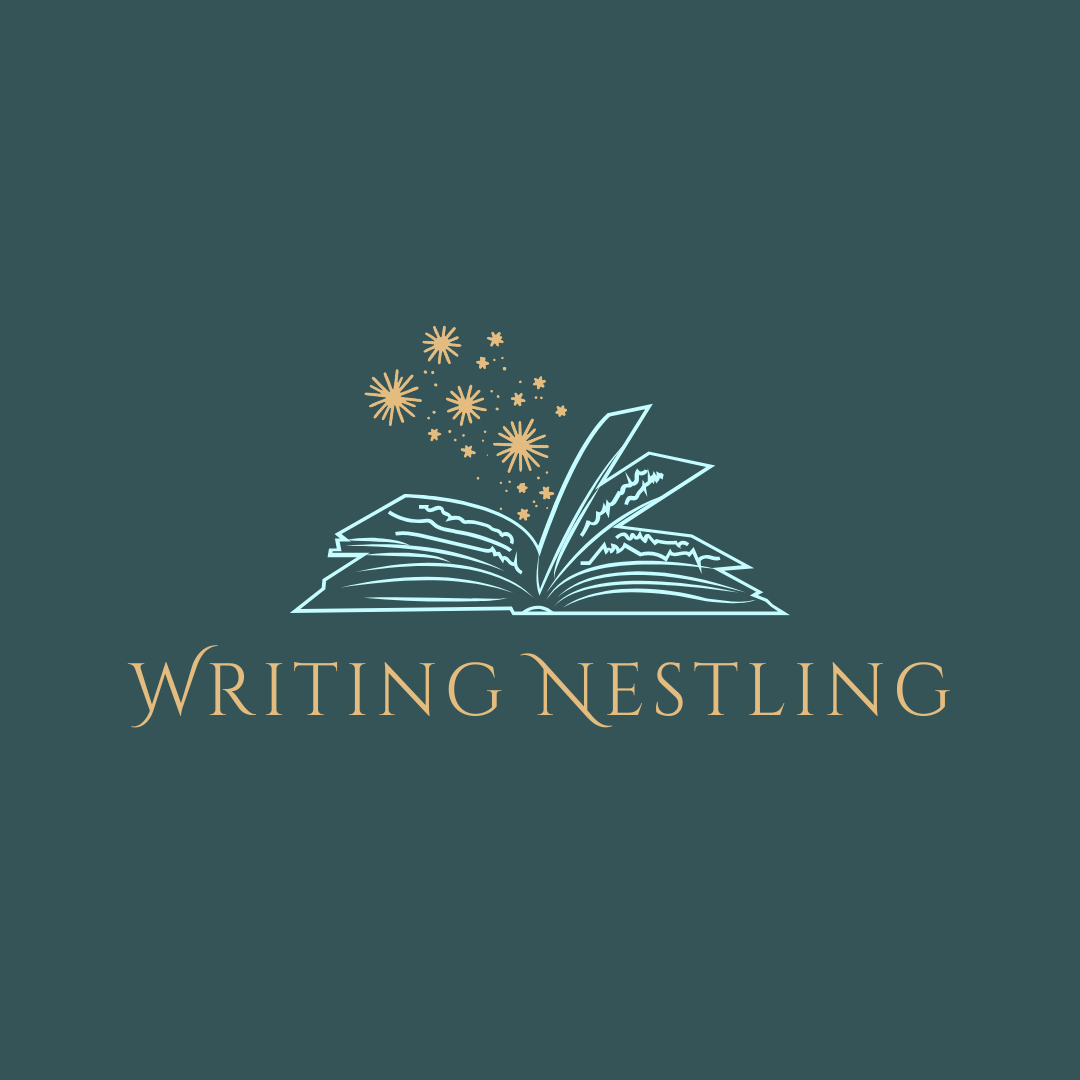How To Write Enemies To Lovers (10 Top Tips)
How To Write Enemies To Lovers
How To Write Enemies To Lovers: Embarking on the captivating journey of crafting an Enemies to Lovers narrative is akin to wielding a literary alchemy, where the sparks of discord metamorphose into the flames of passion.
This genre, rich with tension, emotional depth, and unexpected transformations, has the power to engage readers on a visceral level, drawing them into a narrative dance where adversaries become unlikely allies and animosity gives way to a simmering, complex romance.
In this exploration of How To Write Enemies to Lovers, we delve into the intricacies of character dynamics, setting the stage for conflict, and navigating the delicate balance between tension and tender connection.
It’s an artful venture into the hearts of characters whose journey from hostility to love mirrors the nuanced complexities of the human experience, inviting writers to masterfully wield their pens to create stories that linger in the minds and hearts of readers.
How To Write Enemies To Lovers
Here’s a step-by-step process on How To Write Enemies To Lovers:
Establish Initial Conflict
Introduce the characters with opposing goals, values, or circumstances that create tension between them.
Develop Strong Personalities
Create well-rounded characters with distinct personalities, flaws, and strengths to make the conflict more engaging.
Build Antagonism
Gradually escalate the tension between the characters through disagreements, misunderstandings, or clashes that highlight their differences.
Reveal Vulnerabilities
Provide glimpses into each character’s vulnerabilities and insecurities, fostering empathy from the audience.
Forced Proximity
Create situations that force the characters to spend time together, increasing the frequency of interactions and opportunities for emotional development.
Shared Goals or Threats
Introduce a common goal or external threat that requires the characters to collaborate, blurring the lines between enemies and allies.
Slow-Burning Romance
Develop the romantic aspect gradually, allowing the characters to discover new facets of each other and challenge their initial perceptions.
Conflict Resolution
Have the characters confront and resolve their differences in a meaningful way, leading to personal growth and a shift in their relationship dynamics.
Emotional Intimacy
Build emotional intimacy through shared experiences, confessions, or moments of vulnerability that deepen the connection between the characters.
Transition to Romance
Once the characters have evolved and the animosity has transformed into genuine affection, transition into a romantic relationship, acknowledging the growth of their love over time.

Understanding the Dynamics
In the intricate dance of storytelling, Understanding the Dynamics is the mesmerizing waltz that sets the stage for a symphony of emotions.
Like two celestial bodies hurtling through the cosmos, characters in an Enemies to Lovers narrative are bound by opposing forces, colliding in a ballet of tension and animosity.
Unraveling their intricacies is akin to decoding the enigmatic language of the universe. It’s about peeling back the layers, exploring the gravitational pull of conflict, and discovering the magnetic allure that draws characters together against the backdrop of their differences.
Understanding the Dynamics isn’t just about observing the sparks fly; it’s about harnessing the explosive energy, forging connections from the embers, and letting the narrative unfold in a blaze of captivating brilliance.
In this cosmic tango, each step reveals more about the characters, their motivations, and the irresistible allure of transformation.
Establishing compelling characters
Establishing compelling characters is akin to weaving the threads of a literary tapestry, where every nuance and stroke contributes to the richness of the narrative.
These characters are not mere ink on paper; they are living, breathing entities with depth and complexity. It involves delving into the recesses of their pasts, illuminating the shadows of their fears, desires, and aspirations.
A compelling character is a mirror reflecting the human condition, complete with flaws that render them relatable and strengths that inspire admiration.
Each quirk, scar, or idiosyncrasy contributes to the vibrant mosaic that defines them. By breathing life into these characters, writers invite readers to embark on an immersive journey, forging emotional connections that transcend the boundaries between fiction and reality.
In the delicate dance of character establishment, authenticity is the melody, and resonance is the key to capturing hearts and minds.
Building a strong foundation for enmity
Building a robust foundation for enmity is akin to constructing the bedrock of a turbulent narrative edifice. It involves carefully laying the groundwork for animosity, ensuring it emerges organically from the intricate layers of character dynamics and plot intricacies.
The key lies in identifying and accentuating the disparities that act as catalysts for conflict, whether they be clashing ideologies, unresolved past grievances, or the collision of diametrically opposed personalities.
These elements serve as the building blocks for a palpable sense of discord, cultivating an environment where tension simmers beneath the surface.
Crafting a strong foundation for enmity demands a delicate interplay of motivations, insecurities, and unresolved emotions, creating a palpable friction that sparks and crackles throughout the narrative, leaving readers eagerly anticipating the eventual metamorphosis from adversaries to unlikely allies.
Developing the Conflict
In the alchemical crucible of storytelling, Developing the Conflict is the mesmerizing fusion of chaos and consequence, where literary elements collide like colliding galaxies in a celestial ballet.
It’s not merely about staging dramatic showdowns; it’s an art form that demands the crafting of crescendos and lulls, echoing the heartbeat of a narrative on the brink.
Conflict, in its various guises, is the relentless architect of tension, sculpting characters’ resilience and unraveling the tapestry of their emotional landscapes.
From the subtle tremors of a disagreement to the seismic shifts of a confrontation, every plotted conflict is a brushstroke painting the canvas of anticipation.
Like a master conductor directing a symphony of discordant notes, writers orchestrate conflicts that resonate beyond the pages, leaving readers suspended in an exquisite agony, hungry for resolution yet reluctant to escape the enthralling grip of narrative turbulence.
Developing the Conflict isn’t just about raising the stakes; it’s about crafting a literary tempest that leaves an indelible imprint on the reader’s soul.
Crafting intense and authentic confrontations
Crafting intense and authentic confrontations is a literary alchemy that demands the careful fusion of emotional rawness and narrative precision.
These pivotal moments are not mere collisions of characters; they are the crucibles where unresolved tensions and conflicting motivations combust, birthing revelations that reshape the story’s landscape.
Intensity in confrontation is about orchestrating a symphony of charged emotions—anger, betrayal, vulnerability—into a cacophony that resonates with readers.
It requires an acute understanding of each character’s psyche, ensuring that their words and actions emerge authentically from the depths of their personalities and histories.
The art lies in navigating the fine line between melodrama and genuine emotional upheaval, creating a crucible where characters are tested, alliances shattered, and, ultimately, the seeds of transformation are sown.
Crafting intense and authentic confrontations is the crucible through which characters forge their destinies, and writers wield the quill with a mastery that turns literary sparks into a blazing inferno of narrative brilliance.
Utilizing external factors to heighten tension
In the intricate choreography of storytelling, the art of Utilizing external factors to heighten tension is akin to conducting a suspenseful symphony with elements beyond the characters’ control.
It’s about infusing the narrative with external pressures, unpredictable events, or looming threats that act as catalysts, intensifying the atmosphere and pushing characters to their limits.
From the ominous ticking of a time bomb to the capricious whims of a volatile environment, these external factors serve as the unseen puppeteers, manipulating the narrative’s strings and keeping readers on the edge of their seats.
The skill lies in seamlessly integrating these elements, creating a delicate dance between character-driven conflict and external turmoil.
This interplay not only amplifies the stakes but also adds layers of complexity, transforming a simple story into a riveting saga where tension is not only a product of interpersonal dynamics but a reflection of the unpredictable forces that shape the narrative’s destiny.

Subtle Chemistry
Subtle Chemistry, in the realm of storytelling, is the clandestine dance of narrative elements that transcends the written word, weaving an ethereal connection between the reader’s imagination and the author’s craft.
Like an elusive elixir, it bubbles beneath the surface, infusing the prose with an intoxicating blend of nuance and depth.
It’s the delicate interplay of characters, plot twists, and atmospheric details, conspiring together to create an alchemical reaction that sparks emotional resonance.
Much like an unseen force, Subtle Chemistry operates on the periphery, leaving an indelible imprint on the reader’s consciousness long after the final page is turned.
It’s the fragrance of a well-crafted metaphor, the perfectly timed revelation, and the unspoken tension that, when combined, concoct a potion capable of transporting readers into the heart of a captivating narrative.
In the world of storytelling, Subtle Chemistry is the magic that turns words into an immersive experience, inviting readers to lose themselves in the alchemy of a truly unforgettable story.
Foreshadowing the shift in dynamics
Foreshadowing the shift in dynamics is akin to scattering breadcrumbs through the narrative, leaving tantalizing hints that beckon readers toward the inevitable evolution of the story’s relationships.
It’s the subtle art of planting seeds, allowing them to germinate quietly until the moment of revelation when the narrative blooms into unexpected territories.
Like shadows cast by an impending dawn, these foreshadowed moments create an anticipatory tension, inviting readers to read between the lines and glimpse the transformative journey ahead.
The delicate dance of hints and clues builds an intricate web of anticipation, ensuring that the shift in dynamics feels not only earned but also deeply satisfying.
Whether through cryptic dialogue, symbolic imagery, or a seemingly innocuous event, foreshadowing becomes the author’s brushstroke, painting the canvas of the narrative with a sense of inevitability that heightens the reading experience, making the eventual shift in dynamics all the more poignant and resonant.
Establishing emotional connections amid conflict
Establishing emotional connections amid conflict is the delicate art of threading intimacy through the tumultuous tapestry of discord. It’s about navigating the labyrinth of heightened emotions, finding the subtle threads that weave characters together even in the midst of turmoil.
Amid the clash of opposing forces, writers carve out moments of vulnerability, shared understanding, or unexpected gestures that become the emotional glue binding characters.
These connections, carefully sown within the fabric of conflict, resonate with readers on a profound level, fostering empathy and engagement.
It’s in those quiet moments of connection, amidst the chaos, where the true heartbeat of a story is felt.
In this delicate dance, characters evolve not only through the external battles but also through the internal struggles that deepen their emotional bonds, turning conflict into a crucible for forging relationships that endure the test of adversity.
Transitioning to Lovers
Transitioning to lovers is akin to orchestrating a symphony of metamorphosis, where characters, once adversaries, embark on an enthralling journey that transcends animosity.
It’s a narrative ballet where the choreography of emotions takes center stage, and the crescendo is a harmonious fusion of vulnerability, redemption, and unspoken desires.
As the script unfolds, each word becomes a brushstroke, painting a portrait of hearts in transition. The shift is not a mere plot twist but a seismic event, a celestial alignment of story elements converging to birth a love that defies the scars of enmity.
Like alchemists of the heart, writers navigate the delicate balance between tension and tenderness, crafting a tale where every glance, every shared moment, becomes the mosaic paving the road to love.
Transitioning to lovers isn’t just a plot development; it’s a narrative revolution, an enchanting spell that captivates readers, beckoning them into a world where love emerges as the triumphant crescendo of an unforgettable symphony.

Identifying the turning point
Identifying the turning point in a narrative is akin to uncovering a hidden constellation in the vast expanse of storytelling.
It’s the pivotal moment when the tides shift, and the characters find themselves at the crossroads of fate. Like an elusive key turning in a locked door, the turning point unlocks the potential for transformation, propelling the story into uncharted territories.
It’s the heartbeat of anticipation, the culmination of subtle foreshadowing and narrative intricacies, where conflicts reach a zenith and resolutions linger on the horizon.
As the narrative pivots on this axis, characters are forced to confront their deepest fears, desires, or vulnerabilities, setting the stage for an inevitable metamorphosis.
Identifying the turning point isn’t just about recognizing a plot twist; it’s about understanding the seismic shift that propels the story forward, leaving an indelible mark on the reader’s journey through the captivating labyrinth of storytelling.
Navigating the transition with authenticity
Navigating the transition with authenticity is akin to threading a delicate needle through the fabric of emotions, ensuring that every stitch resonates with genuine sincerity.
As characters evolve from adversaries to lovers, the narrative dance demands a meticulous choreography that captures the essence of their transformation.
Authenticity lies in the raw vulnerability displayed in each exchanged glance, the unfiltered emotions laid bare in every conversation.
It’s about navigating the labyrinth of the heart with an unwavering commitment to truth, embracing the complexities that come with emotional metamorphosis.
Writers become emotional cartographers, mapping the uncharted territories of newfound affections without sacrificing the authenticity of the characters’ initial conflict.
The transition becomes a tapestry woven with threads of honesty, allowing readers to witness a love story that emerges not from contrivance but from the genuine, sometimes messy, evolution of two souls entwined in the intricate dance of storytelling.
Building Romantic Tension
Building romantic tension is like weaving a captivating spell, each thread carefully spun to ensnare the reader’s imagination. It’s an alchemical process where words become charged particles, sparking an electric dance between characters on the precipice of something extraordinary.
The art lies in the subtle brushstrokes—lingering glances, charged exchanges, the weight of an unspoken word—that amplify the heartbeat of anticipation.
It’s the deliberate pacing, the crescendo of emotions ascending like a symphony, leaving readers breathless, hanging on the precipice of desire.
Building romantic tension is not just about creating sparks; it’s about crafting a magnetic field of emotions that draws readers into the gravitational pull of an unfolding love story.
In this literary enchantment, the anticipation becomes palpable, the tension an invisible force that binds hearts in a dance as timeless as the pages it unfolds upon.
Slow-burning romance
A slow-burning romance is the art of kindling passions with the patient flicker of a carefully tended flame. It’s a narrative dance where the journey is as significant as the destination, a subtle interplay of emotions that crescendos gradually, like a melody building in intensity.
This deliberate pacing allows the characters to evolve organically, each encounter leaving an indelible mark on their hearts. It’s about savoring the anticipation, relishing the nuanced dance of glances and stolen moments that, like embers, ignite the spark of love.
The beauty lies in the quiet intensity, where emotions simmer beneath the surface, creating a palpable tension that resonates with readers.
A slow-burning romance is not a race to passion but a journey where the warmth of connection is felt in every tender, unhurried revelation, leaving an enduring imprint on the pages of a love story that unfolds at its own, deliberate pace.
Utilizing symbolism and motifs
Utilizing symbolism and motifs in storytelling is akin to weaving an intricate tapestry of hidden meanings and recurring themes, adding layers of depth and resonance to the narrative.
Like a masterful painter, writers use symbols as brushstrokes, imbuing their work with an additional dimension of meaning that extends beyond the surface plot.
Whether it’s a recurring image, a specific object, or a nuanced color palette, these motifs serve as silent messengers, communicating profound truths to the attentive reader.
Symbolism, when wielded with finesse, transcends the literal and becomes a language of its own, inviting readers to interpret, question, and discover hidden connections.
It’s the art of storytelling elevated to a poetic realm, where every symbol is a carefully chosen note in the composition of a narrative symphony, leaving a lasting impression that lingers in the reader’s mind long after the final chapter has unfolded.
Resolving Conflict
Resolving conflict in a narrative is akin to conducting a delicate surgery on the beating heart of a story, where the precision of each move determines whether the characters will heal or bleed.
It’s not merely about tying loose ends but orchestrating a symphony of emotional resolutions that resonate long after the final words have been read.
Like a tapestry intricately woven with the threads of redemption, forgiveness, and growth, the resolution becomes a masterstroke that elevates the entire narrative.
The art lies in finding the delicate balance between catharsis and authenticity, allowing characters to navigate the tumultuous waters of resolution with the grace of a well-choreographed dance.
In this narrative ballet, the conflicts are not mere obstacles to overcome but stepping stones towards a richer, more profound understanding of the human experience.
Resolving conflict is the ultimate alchemy, transforming discord into harmony and leaving readers with a poignant echo of closure that lingers in the corridors of their imagination.
Addressing unresolved issues
Addressing unresolved issues in a narrative is akin to embarking on a courageous journey through the labyrinth of emotions, where characters confront the ghosts of their pasts and navigate the stormy seas of lingering tensions.
It’s not merely a confrontation but a delicate dance of vulnerability, a chance for wounds to be healed or scars to be etched deeper.
Like opening a long-sealed letter, addressing these issues invites readers into the raw, unfiltered core of the characters’ experiences.
The narrative becomes a forum for exploration, a space where truths are laid bare, and the untangled knots of unresolved conflicts are finally given the attention they demand.
The art lies in infusing these moments with a poignant authenticity, ensuring that the resolution isn’t just a convenient plot point but a transformative process that shapes the characters’ evolution.
In the realm of storytelling, addressing unresolved issues is the gateway to emotional catharsis, a narrative pivot that lends depth and richness to the intricate tapestry of human connection.
Demonstrating character growth
Demonstrating character growth within the narrative is akin to watching the slow, mesmerizing unfurling of a delicate bud into a vibrant bloom.
It’s the essence of storytelling alchemy where characters, like living entities, evolve, learn, and shed the layers of their former selves.
Through trials, tribulations, and transformative experiences, the narrative becomes a canvas upon which the brushstrokes of personal development are painted.
The art lies in weaving a seamless tapestry that captures the nuances of change—subtle shifts in perspective, newfound strengths, or the quiet conquering of inner demons.
Character growth isn’t a linear path but a mosaic of moments where readers witness the blossoming of resilience and the emergence of wisdom.
It’s the journey from vulnerability to strength, from naivety to wisdom, that lends a timeless, resonant quality to a story, leaving an indelible mark on the reader’s consciousness long after the final chapter concludes.
Frequently Asked Questions (FAQ) about How To Write Enemies To Lovers
What makes the Enemies to Lovers trope so compelling in storytelling?
The Enemies to Lovers trope captivates audiences by weaving a narrative tension that transforms initial conflict into a rich, layered romance. It engages readers emotionally, offering a rollercoaster ride of animosity, unexpected connections, and eventual transformation that mirrors the complexities of real-life relationships.
How do you strike the right balance between animosity and romance in an Enemies to Lovers story?
Achieving the delicate equilibrium involves crafting multi-dimensional characters with authentic motivations, providing gradual character growth, and employing nuanced storytelling techniques. The key is to let the animosity simmer and evolve naturally into romantic tension, ensuring that both elements contribute to the narrative’s depth.
Can the Enemies to Lovers trope become clichéd, and how can writers avoid common pitfalls?
While the trope is popular, avoiding clichés is crucial. Writers should strive for originality by giving characters unique backgrounds, motivations, and conflicts. Subvert expectations, introduce unexpected twists, and focus on authentic character development to keep the narrative fresh and engaging.
Is it essential for the initial conflict to be intense in an Enemies to Lovers story?
Intensity in the initial conflict can add depth, but it’s not mandatory. What matters most is crafting authentic and believable animosity. Whether the conflict is intense or subtle, it should serve as a foundation for character growth and the eventual transition to a romantic connection.
How do you create a satisfying resolution in an Enemies to Lovers story?
A satisfying resolution involves addressing the root causes of conflict, allowing characters to evolve, and providing a resolution that feels earned. Readers should witness genuine growth and transformation, ensuring that the transition from enemies to lovers is a cathartic and rewarding experience.
Can the Enemies to Lovers trope be applied to different genres, or is it exclusive to romance?
The Enemies to Lovers trope is versatile and can be applied across various genres, not limited to romance. It adds depth and complexity to mysteries, fantasies, or even thrillers, offering a dynamic element to any narrative where interpersonal relationships play a significant role.
How do you keep the tension alive throughout the story without overwhelming the romance?
Sustaining tension involves strategic pacing, utilizing external factors, and employing effective foreshadowing. Balance is key; allow moments of tenderness to coexist with unresolved conflict, ensuring a gradual and believable transition that keeps readers invested in the evolving dynamics.
Conclusion
In the conclusion of How To Write Enemies To Lovers, mastering the art of writing Enemies to Lovers is a compelling journey that invites writers to navigate the complexities of human connection.
From crafting authentic animosity to orchestrating the delicate dance of transformation, this trope offers a canvas for exploring the nuanced spectrum of emotions.
The conclusion of this writing guide marks not just the end but the commencement of a writer’s exploration into the hearts of characters and the timeless allure of unlikely love stories.
As pens are set aside, the resonance of well-crafted Enemies to Lovers narratives lingers—an echo of tension, growth, and the enduring magic that lies within the alchemy of storytelling.
May this guide inspire writers to embark on their own literary voyages, where animosity and affection collide, giving rise to stories that resonate, captivate, and linger in the minds of readers.






